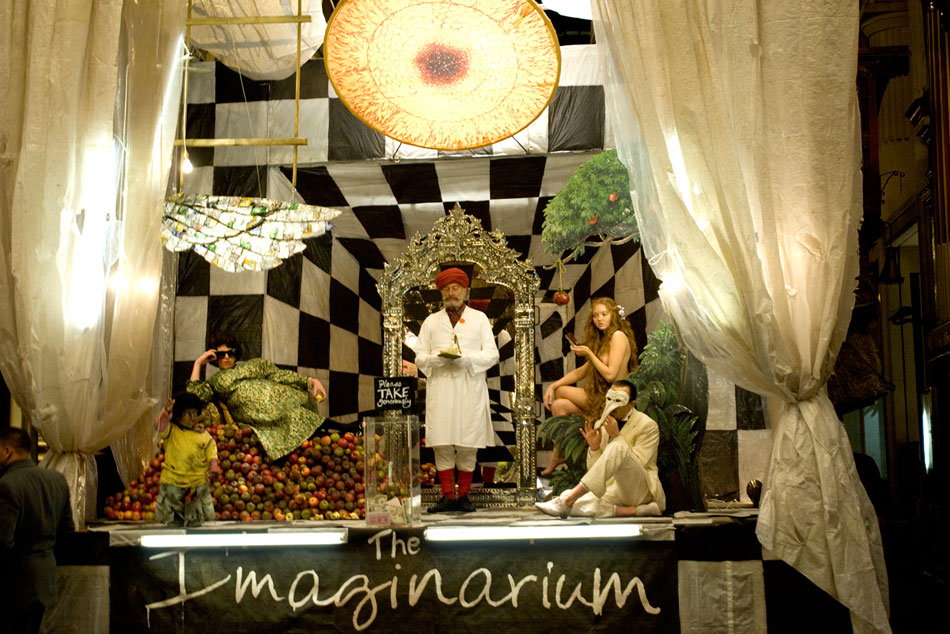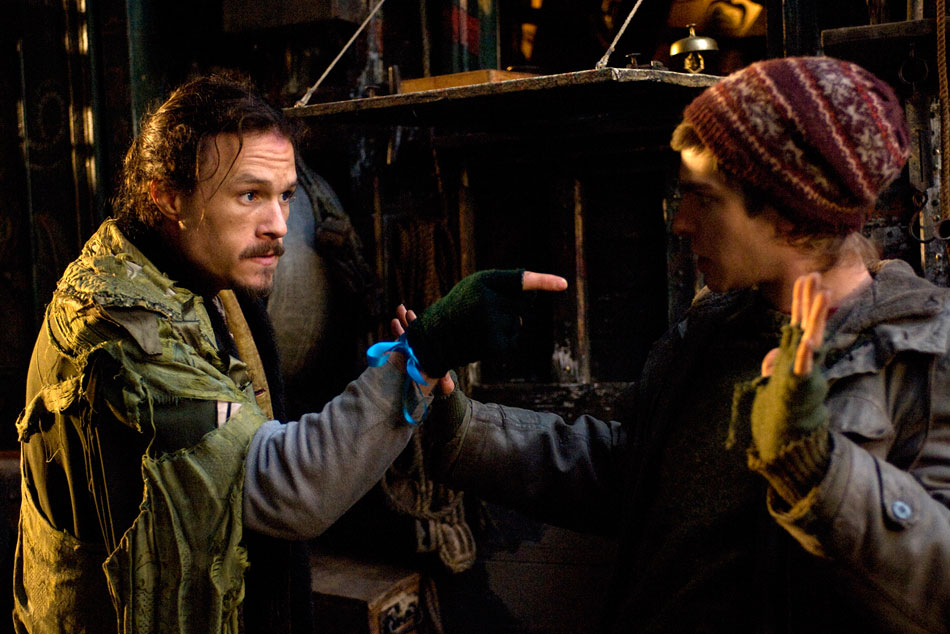Line Producer Robert How,
on making Dr Parnassus happen
by Phil Stubbs
Line Producer Robert How spoke to Dreams one evening in London during the location shoot of Terry Gilliam's latest film project The Imaginarium of Dr Parnassus...
 |
Phil Stubbs: How did you get involved with the project?
Robert How: Paul Docherty, of Peerless Productions, is an old friend of mine. He's obviously worked with Terry on two or three other films before, as well as running Peerless in London. He suggested me for the job because Terry was wanting to try and do something that was more personal, on a slightly smaller scale and I tend to do films around 10 to 15 million pounds or slightly less. So they called me in at the beginning of the year [2007] to look at the script and try and produce a budget - to do it within those confines rather than the usual 50-60 million dollars that he or more that he does.
I did that at the beginning of the year, and I went and worked on another film. When I came back, it seemed to have more momentum, and it had other people brought in including Infinity in Canada so it was becoming a co-production. They produced a budget which took it up to about 28, 29 million and I did some more adjustments, and we just went over 30 and that's when they took it to the market.
Terry Gilliam films have a certain reputation, unfair or otherwise. How did that make you feel, did you approach it with a bit of trepidation?
Yes, I think that's the right word. There's a little bit of trepidation because you consider his reputation - whether it's justified or not. But having met him and talked through what he wanted to do, he had a very clear idea of how he wanted to do this, how he wanted to make it work, and also that he had something to prove to other people that he could do the film. Not only was it going to be at a controlled budget at this level, but also that he could do it, bring it on schedule and also on budget, as opposed to the reputation that he unjustifiably has.
That reputation as an out of control madman…
Hopefully not that bad! People have mentioned words to that effect. He's undoubtedly mad, but he understands very much what he wants. He's very particular about certain things, and when he started off he had storyboarded virtually the whole of the important scenes of the film when I had first met him. He spent two or three hours going through how he wanted to do it, how he wanted to realise it, how he was going to make it work within the confines of the budget by shooting on location in London, and shooting the Imaginarium scenes against green screens, and having a controlled environment, and having them particularly worked out beforehand - to such an extent that it is much more a controllable thing than say Grimm, which was much more rambling. Also this is a more pet project he had written himself and he had written it and developed it within the confines, knowing that that is how he wanted to do it, as opposed to been given a script which he then had to work on, he had his own ideas that he and Charles had developed between themselves.
What specifically are your responsibilities on the picture?
Well, initially, it's to produce a budget and schedule - which the producers can then take to the market or try and raise finance against. Then when that happens, I'm responsible for basically running the production on a fiscal level of getting the crew hired and overseeing that and liaising with the bond company to make sure they're happy that everything that we are doing can be done within the strictures which are set down within the budget… giving confidence to the financiers that we can do that, and liasing with above-the-production level with the other financiers, and obviously having the eye on how it's going to be produced physically on the ground.
Are you with the project in Canada too?
I'm going to Canada for the project there. We've been over there once already to look at the locations and the stages so we've set it up. We're responsible for getting their advice on crews and setting that up and overseeing the budget and the schedule for filming there. So I'll be there for the continuation of that, and we come back to the UK. We've got 4 to 5 weeks of model shoot here, which I'm also here for. After that's finished, I then stay on for 4 to 5 weeks to wind everything down and hand over to the postproduction - which is basically Mick [Audsley, the editor] working with Terry, and the sound, and the composer, and all that sort of thing which is normally where the producers step in and oversee that, and when I tend to drift away.
 |
Is there anything that you are finding particularly rewarding about this picture?
Working with Terry is always very rewarding. Staying up all night is clearly a great bonus, and working through the day as well! It's exciting because it's a very imaginative and creative project. I have done a lot of work with people like Ken Loach, which is very gritty social realism, shooting in the streets and things. It's a very rare chance to do something which is slightly heightened and moves away from reality. It's not a social comment, it's not a social critique. But it's striving to be a fantasy, a comedy of very different elements, which is very interesting and immensely enjoyable.
How have the streets treated you on this one?
It's been tough actually, I have to say. I hadn't done a film in London for about 4 or 5 years to this extent. Filming not just in the streets in London but also filming in iconic places in London, you just forget how difficult that is. Whilst the Film Commission and the UK Film Council etc work very hard to make it easier to film in London - you can film in places like Leadenhall and the Power Station and Blackfriars Bridge, including staging a hanging - there are bodies there that will help you do that.
Yet there are other bodies that tend to make it a difficult process at the same time. It is physical and it is expensive. You spend a lot of money because everybody is expensive. All these places know the cost and what it's worth. And everybody around it, setting up unit bases, paying for parking, organising the facilities, they all realise the cost of what it is as well. You tend to end up paying through the nose to do that. But the results you get from places like this and Tower Bridge and the Power Station are wonderful on screen.
Link to Dr Parnassus homepage within Dreams